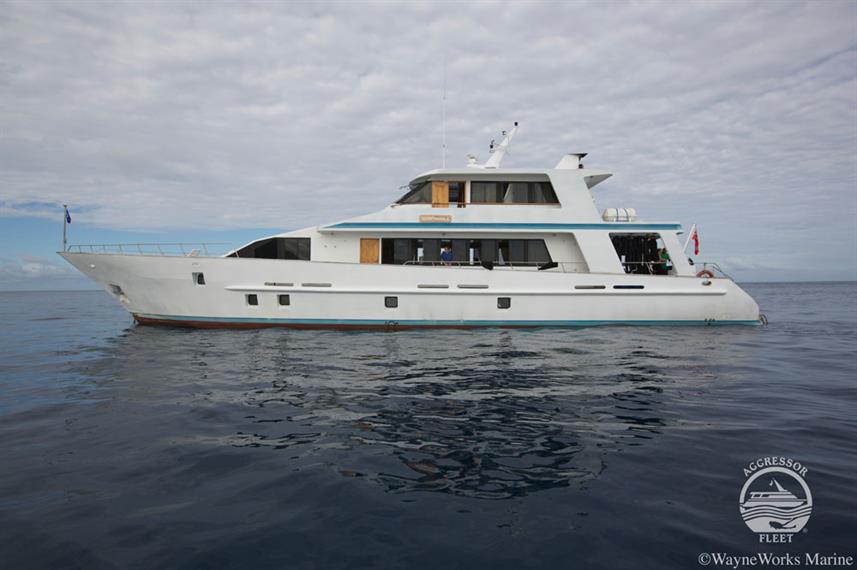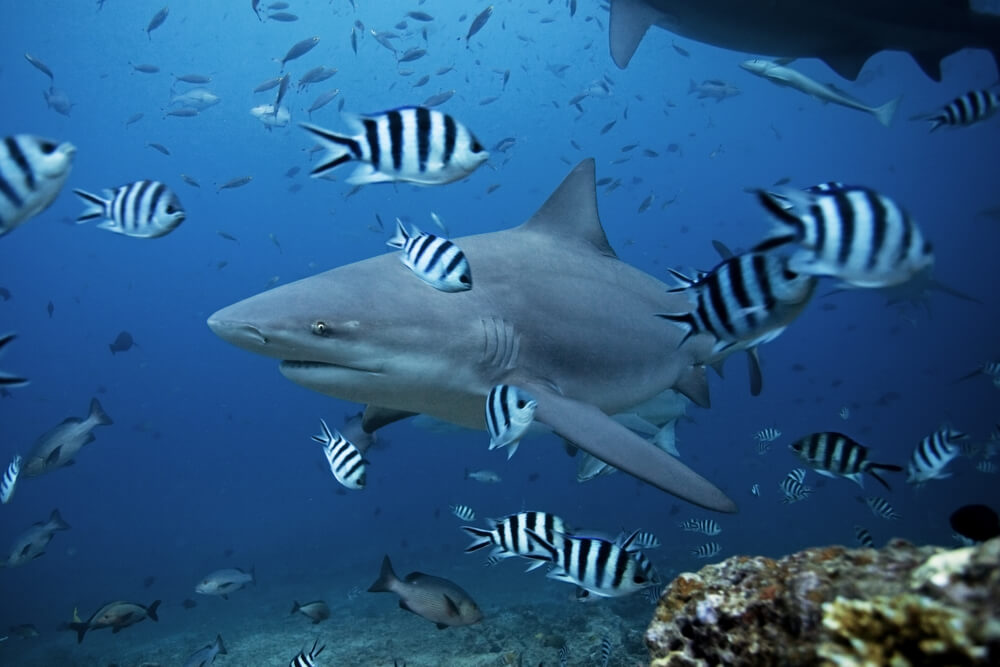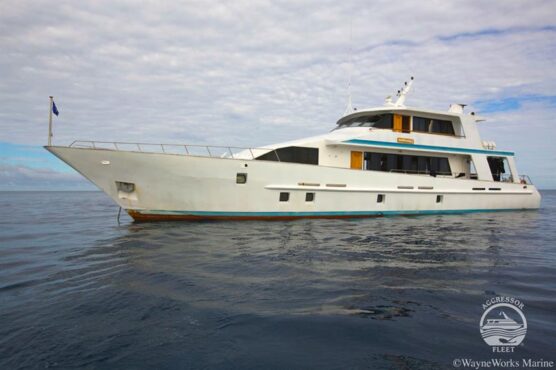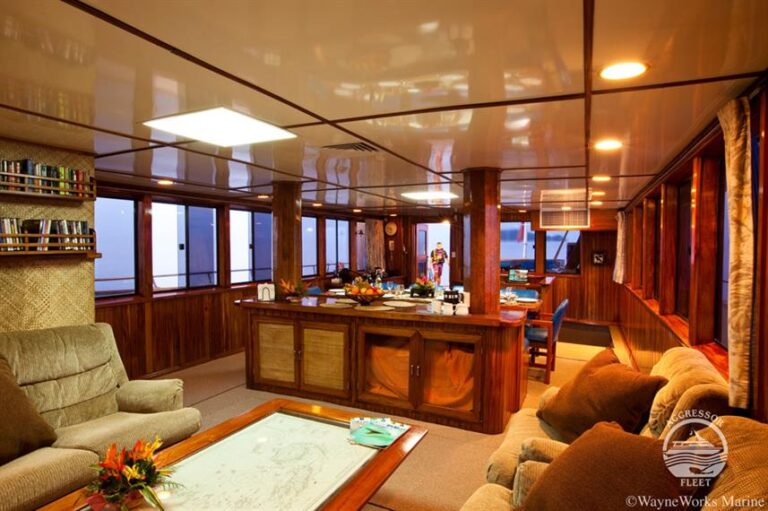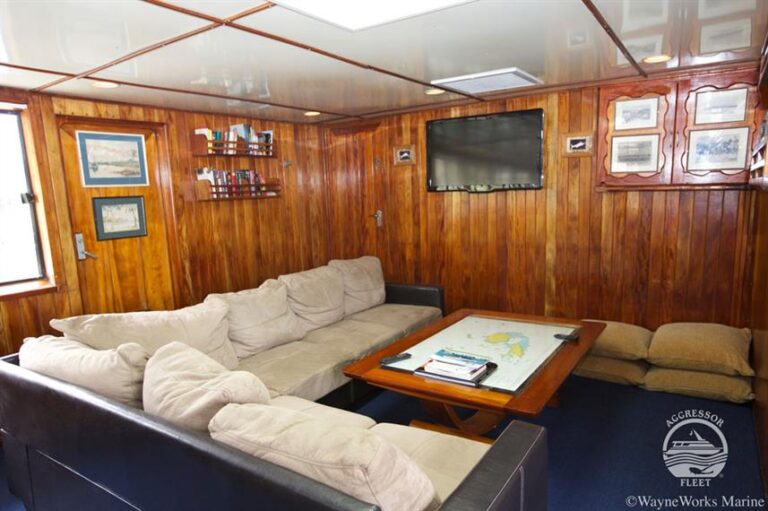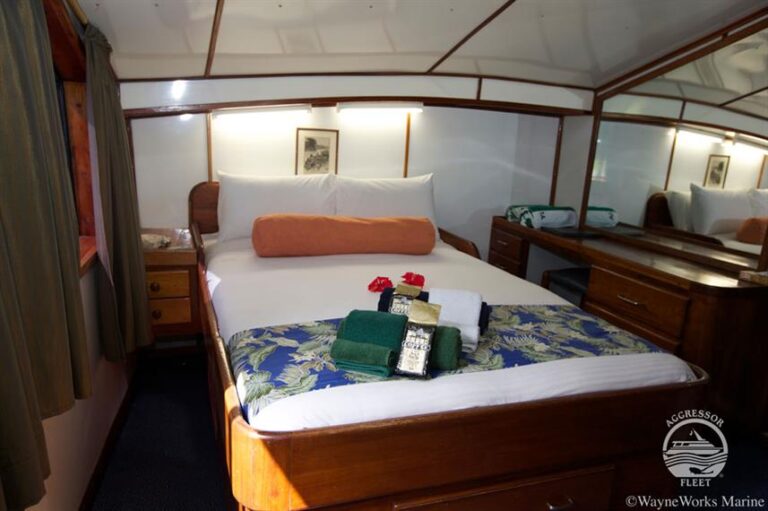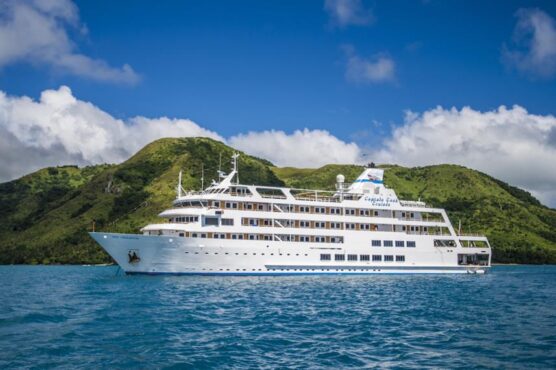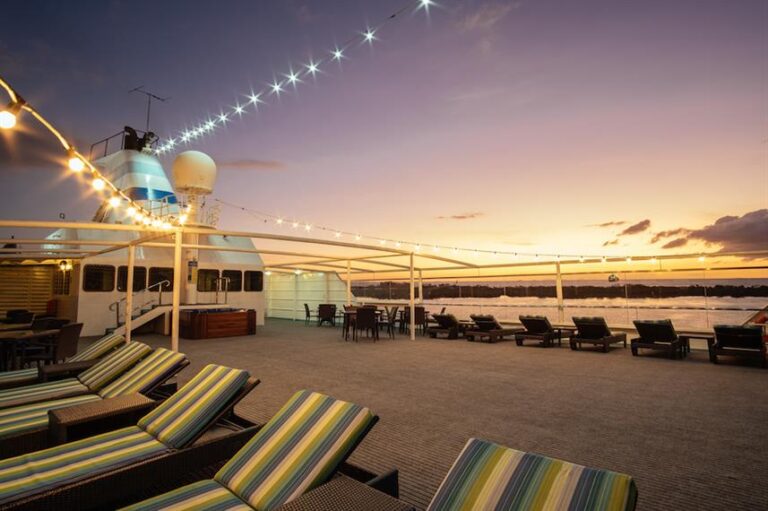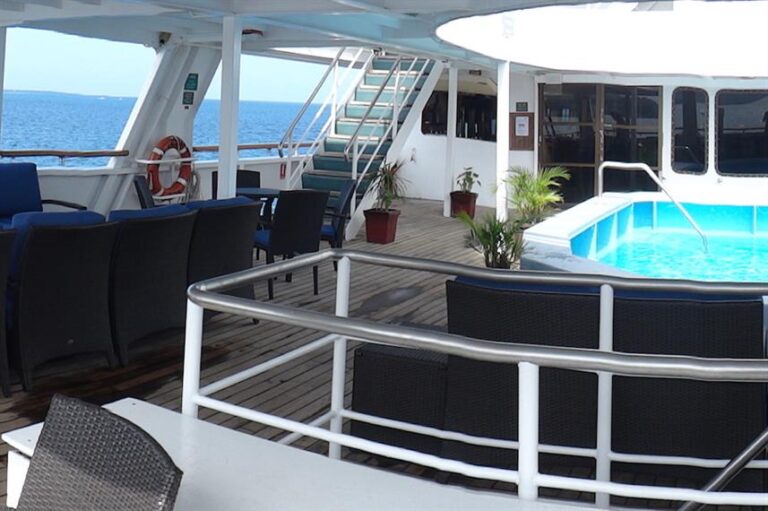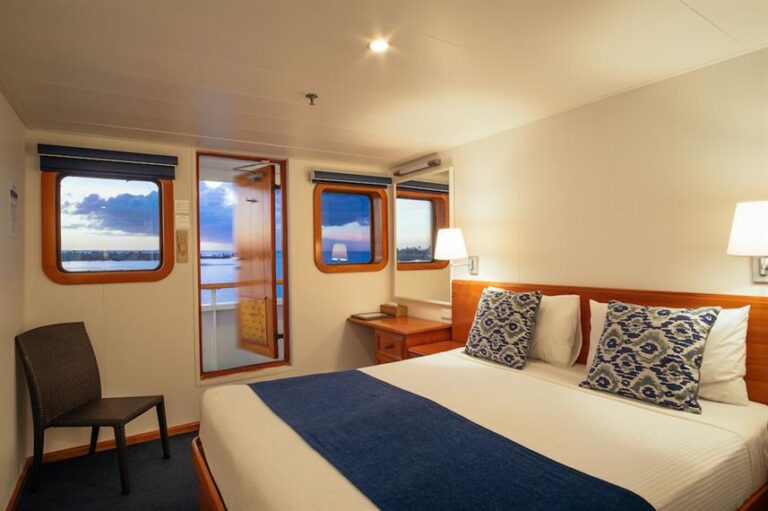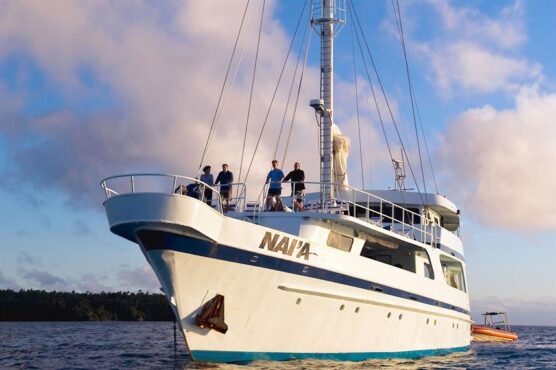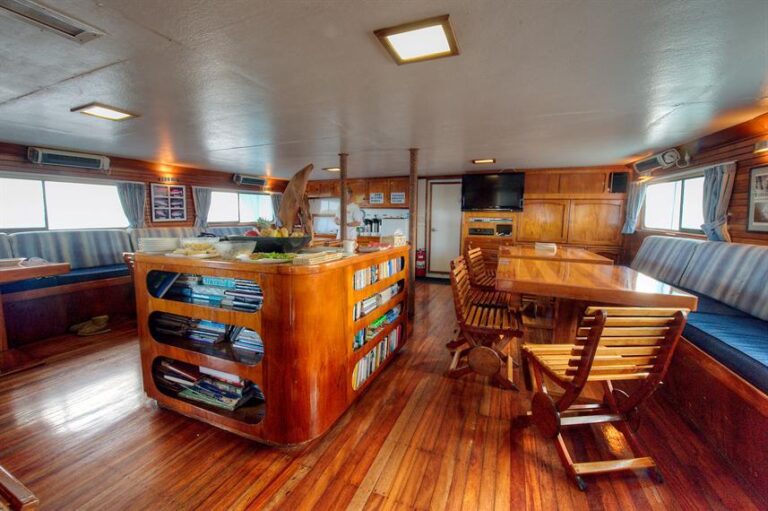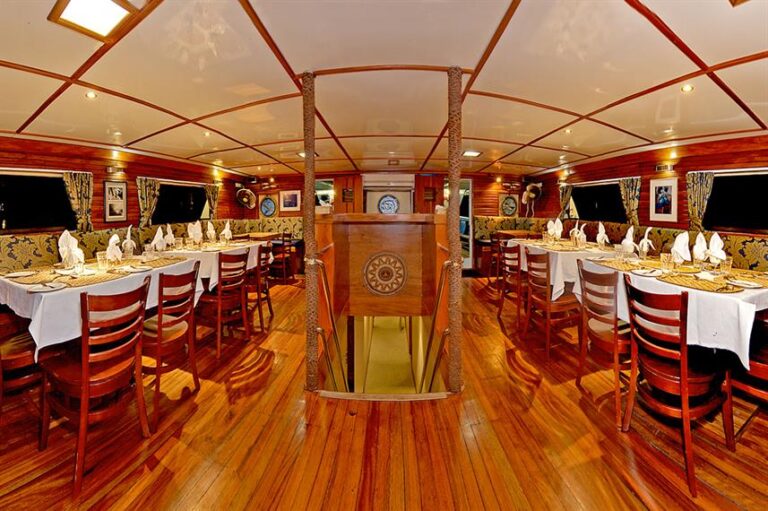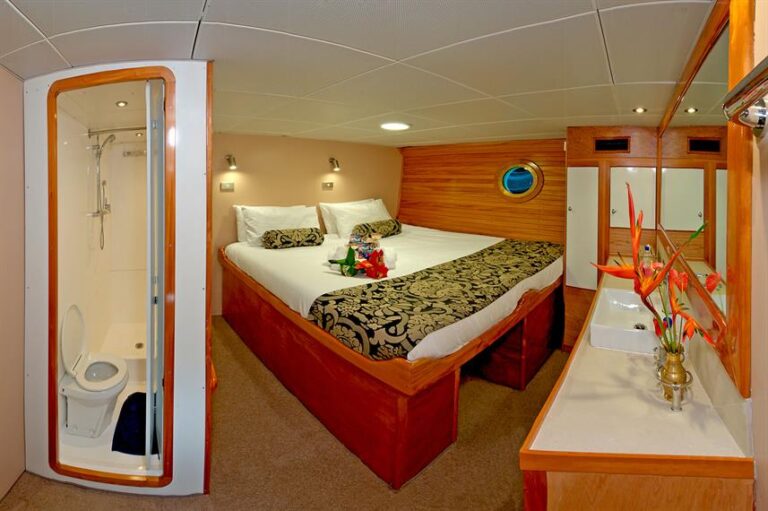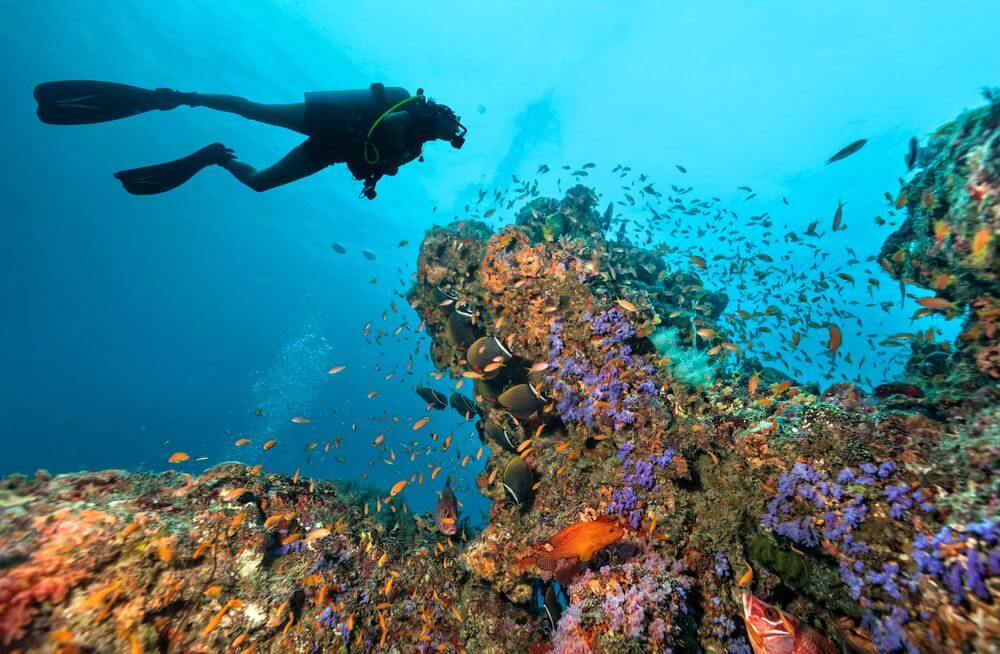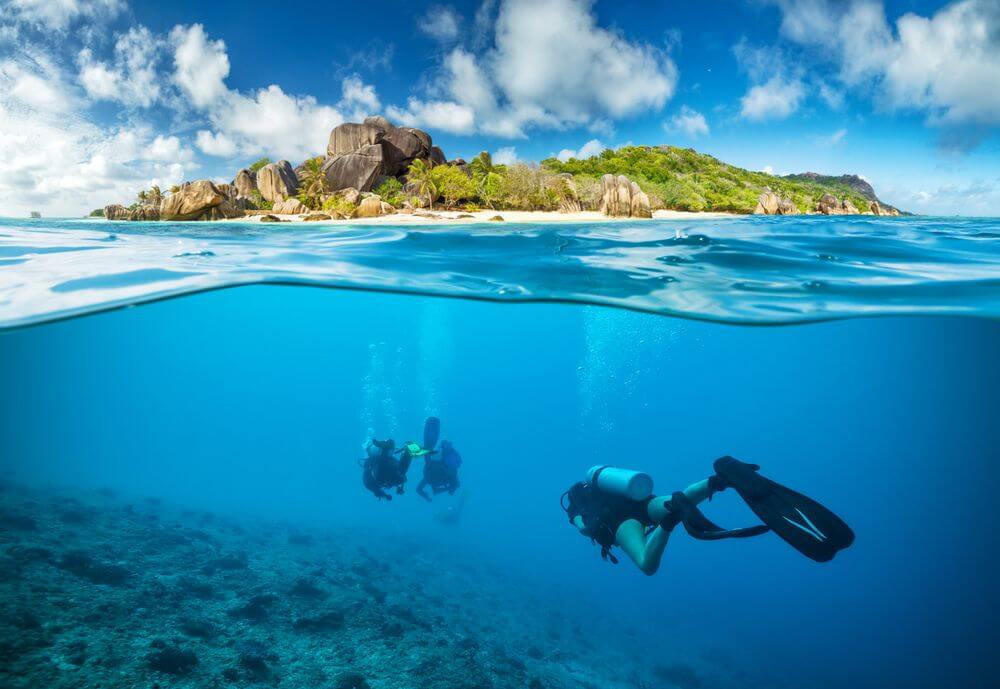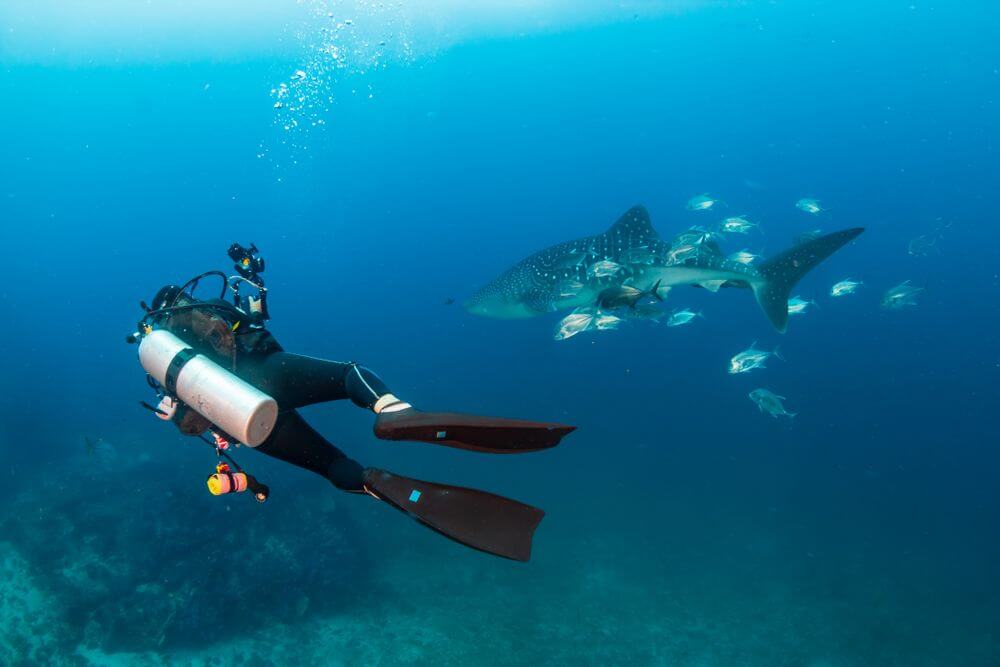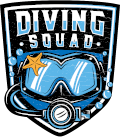
The Best Fiji Liveaboards
Fiji is known for some of the best scuba diving in the world, famous for waters so rich with nutrients, that it hosts some of the most incredible dive sites.
From a great variety of exciting barrier reefs and wall diving to the astoundingly colorful soft coral that Fiji diving is best known for.
Home to an incredible ecosystem of life including sicklefin lemon shark, manta rays and turtles. Did we mention that it’s also known as the soft coral capital of the world?
There is absolutely no denying it. Going on a liveaboard in Fiji is the BEST way to experience the beauty that awaits beyond the perfectly white sandy beaches… so how exactly do you pick the best one for you?
What are Fiji water temperatures like? Where can we find the best snorkeling in Fiji? The best time to dive in Fiji? Where can I find some Fiji diving reviews?
Never fear, Diving Squad has all of your dilemmas covered! This is the ultimate guide to liveaboards in Fiji.
First, take a quick look at the best Fiji liveaboards, no matter your requirements.
For more info on the destinations these liveaboards visit, along with their itineraries, scroll down to the destinations in Fiji section.
Table Of Content
- Best Fiji Liveaboards – Quick Look
- Best Fiji Liveaboard Overall, & for Small Groups
- Best Fiji Liveaboard for Beginners, Budget & Short Trips
- Best Fiji Liveaboard for Luxury, Longer Trips & Scuba Photography
- Fiji Liveaboards – What You Need to Know
- Diving Insurance in Fiji
- Diving Season in Fiji
- Fiji Liveaboard Destinations:
- Bligh Water & the Koro Sea
- The Yasawas
- Kadavu Island
- Mamanuca
- Squad Debriefing and Similar Reads
- Diving Squad and Marine Conservation
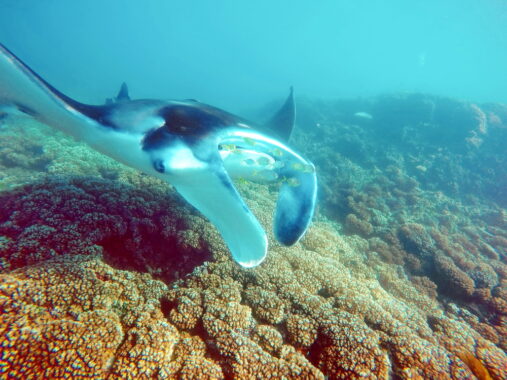
SCUBA FACT
QUICK LOOK - The Best Fiji Liveaboards
| Best For | Liveaboard | Daily Cost (Euros) | Max Guest Capacity | Main Itinerary Length (Nights) | No. Of Logged Dives Required | Months of Operation | Destinations | Check Best Price | |
|---|---|---|---|---|---|---|---|---|---|
| Overall & Small Groups | MV Fiji Aggressor | €€ | 10 | 8 Days, 7 Nights | 0 | All Year | The Bligh Waters & Koro Sea | GET BEST PRICE | |
| Beginners, Budget & Short Trips | Reef Endeavour | € | 130 | A: 4 days, 3 Nights B: 8 days, 7 Nights. | 0 | All Year | Yasawa, Mamanuca, Lau & Kadavu | GET BEST PRICE | |
| Advanced Divers, Luxury & Scuba Photography | Nai’a Fiji | €€€ | 16 | A: 11 Days, 10 Nights B: 8 Days, 7 Nights | 30 | All Year | Lautoka, Bligh Water, Namena, Wakaya & Gau in the Koro Sea | GET BEST PRICE |
Fiji Liveaboard Reviews

Diving Squad Presents:
Best Fiji Liveaboard Overall & for Small Groups.
Fiji Aggressor
- Destinations it visits are: the Bligh Water and Koro Sea Dive Sites.
- From € 280 / day – $$
- Trip Length is 8 days / 7 nights.
- Dive cruises run all year.
- Full range of PADI beginner and advanced open water diving courses available.
Say hello to our featured OVERALL best Fiji liveaboard! Yes, this one really does take the cake. With a daily rate of € 280 / day, you actually won’t believe that the trip didn’t cost you more.
With thousands of dives under their belt, the 5 dive staff crew members aboard the Fiji Aggressor have mastered the fine balance between guests’ safety and enjoyment. This is Fiji liveaboard diving at it’s best.
This 30.5m luxury liveaboard comfortably accommodates 10 guests, featuring 5 deluxe cabins with individual climate control and en suite facilities. The small size of this liveaboard ensures that all guests get the full attention and prioritisation that they deserve.
Wanna snorkel Fiji? The M/V Fiji Aggressor is also snorkeling-friendly, meaning that on the rare circumstance that guests do not take to diving, or for some reason you cannot dive… you’ll still be able to enjoy the stunning waters and soft corals that Fiji is so famous for.
Over 8 days and 7 nights, the perfect time span for novice divers to attain the PADI open water certification, and still have time to dive your heart out. You’ll dive a total of around 20 times, for just 280 Euros a day.
Just imagine exploring the reefs and walls of Nighali Pass, Wakaya Pass – a dive starting at a sandy bottom and after a short swim results in a wall dive where you can look down to 43 meters – and so many other insane dive sites in the Koro Sea.
As well as the Namenalala Islands, home to large manta rays, turtles, barracuda and grey reef sharks, clownfish and nudibranchs. Well, with this liveaboard you won’t need much of an imagination to do just that!
There is a beautifully spacious salon and lounge area, ideal for relaxing and viewing video footage of the day’s diving adventures. The sundeck features covered and uncovered lounging with spectacular views of the Fiji Islands.
Finally, for the non-divers, look forward to experiencing something truly unique: some of Fiji’s local culture. The M/V Fiji Aggressor makes a visit to a Fijian village on one of the remote islands, including a Kava ceremony and warrior dance. Something quite spectacular.
Described as the hands-down best Thailand liveaboard for beginner divers, due to its small passenger capacity, we advise booking this liveaboard well in advance. So to avoid disappointment, why not make a reservation now?

Diving Squad Presents:
Best Fiji Liveaboard for Beginners, Budget & Short Trips
MV Reef Endeavour
- Incorporate a dive holiday with all the comforts of a well-equipped modern ship on this overall best liveaboard: Social areas, swimming pool, sun deck, spa, fully equipped gym… AND MORE!
- Destinations it visits are: Yasawa Island and Northern Yasawa, Mamanuca, Kadavu.
- From € 124 / day – $
- Main Trip Length is 8 days/7 nights
- Operates all year
Offering its guests year-round diving and cruise trips to some of Fiji’s most scenic destinations, like Tivua Island and Bouma Waterfall.
This liveaboard is without a doubt the best liveaboard available in Fiji, catering for everyone from the avid budget hunter, with dive trips starting at € 124 / day, and cruises from €769.
Divers looking for shorter trips will enjoy this liveaboard and its cruises as short as 4 days and 3 nights, available all year. Combine both cruises, and the Reef Endeavour liveaboard has cruises lasting as long as 12 days and 11 nights!
Did we mention that this liveaboard is non-diver friendly, and also seriously great for beginners too? Because of the dive destinations being more suited to non-divers and beginners, if you have no experience – well, we found a match for you with this one. Are you part of a big group of divers? Well, this liveaboard caters for that too, with a total of 64 cabins.
Onboard, there is a full range of PADI beginner and advanced open water diving courses available (at extra cost), led by the immensely encouraging and experienced staff. What’s more, is that at an extra cost you can buy more dives too – perfect for when you start getting the hang of the underwater world!
Not to mention that with its swimming pool and sun deck, spa, fully equipped gym, 2 bars, 2 lounges, indoor and outdoor dining areas, and souvenir shop – it’s the most luxurious option sailing the Fiji waters.
Fiji dive cruises aboard the MV Reef Endeavour liveaboard offer you the chance to explore exciting and remote dive sites via the smaller dive tender. Experience diving through caves, beautiful coral gardens and bommies.
You can expect 2 dives per day, wherever possible, and night dives are also available on occasion if the conditions are right for it. Luckily, the knowledgeable dive instructors will be able to tell you exactly when you’ll be able to brave the waters after dark.
Every single cabin features AC (bliss for the month of Jan when the Fiji weather is hot and humid), private en-suite bathroom, toiletries, towels and… They get serviced daily.
Another thing adding to the overall greatness of the liveaboard is that the Reef Endeavour cruises to idyllic Monuriki where Tom Hanks’ Castaway was filmed. Explore this natural film set on a guided kayak tour… Maybe you’ll find Wilson.
Dive sites will vary depending on the cruise (there are quite a few options) and conditions, however this liveaboard cruises the Mamanuca and Yasawa Islands of Fiji – destinations other liveaboards don’t really ever go to.
Swim throughs, caves, coral bommies and breathtaking coral gardens are some of the highlights divers are known to experience when joining this liveaboard. What’s more, is that with this liveaboard you’ll get the opportunity to discover the legendary grandeur of Sawa-i-lau, and the famous limestone caves at your own pace.
Combining both the 3 & 4 day trips of the Mamanuca and Yasawa Islands, the 7 night tour will give you access to the most breathtaking scenery and cultural experiences that the region has to offer. You’ll also get to embark on their exclusive trip to The Narokorokoyawa or Sacred Islands, where you will experience a Sevusevu (gift giving) ceremony!
The average dive duration is 40 minutes and most dives cater to part-time or occasional divers with their Open Water PADI. For first time divers, a gentle entrance from the shores of a tropical island will see you exploring the spectacular coral reefs.

Diving Squad Presents:
Best Fiji Liveaboard for Luxury, Longer Trips & Scuba Photography
Fiji Nai'a
- This liveaboard provides guests with comfort and exceptional diving!
- Open Water – 30 minimum logged dives required.
- Destinations it visits are: Namena, Wakaya, and Gau in the Koro Sea.
- From € 448 / day – $$$
- The main trip length is 8 days and 7 nights, however, there are also longer trips lasting 11 days and 10 nights.
- Operates all year round
A trip aboard this liveaboard is a diver’s paradise. What’s more is that the captain, crew and experienced dive guides on the Nai’a cannot wait to share their passion and knowledge of Fiji with you. First-class diving awaits, and the Nai’a itinerary is especially perfect for the experienced diver. However, dive courses are also available on request.
Fiji scuba diving is amazing and you will never want it to come to an end! Choosing a ten-day charter (as opposed to the normal 8-day one), you’ll have more time available to dive other reefs in the Koro Sea, some of them near Namena and others near absolutely nowhere! Longer dive trips don’t get any better than this.
Perfectly kitted for divers, the spacious dive deck offers enough space for gear storage and kitting up, while the dive platform allows for really easy access to the water.
Fiji offers divers the chance to see everything from manta rays and dolphins to nudibranch and pygmy seahorses. Colourful soft and hard corals are abundant when diving with this liveaboard, as it sails to dive sites in the Koro Sea.
Koro Island has currents from the Koro Sea which bring massive amounts of nutrients to the reefs. Encounters with reef fish like butterfly fish, angelfish and parrot fish are common.
Okay, experienced divers listen up: Chat to the captain about the possibility of anchoring at shark point (this will be condition dependant). The secret is in the name… If you’re looking for sharks, then you will probably want to do a drift dive here for the best opportunity to see them!!
Underwater photographers always seem to be the most reluctant to head back to shore after a dive trip. With full access to a dedicated camera room with freshwater rinse tanks and compressed air for cleaning and drying – we actually don’t blame them!
The entertainment area is also great for watching your footage after a day of diving. While onboard internet means you don’t have to wait until you get back home to share your footage with the rest of the world either.
There are even special expeditions to Tonga to swim with humpback whales, available throughout the year when choosing the Fiji Nai’a! Oh, and expect to enjoy a couple of insane night dives with this liveaboard too.
Catering to just 18 passengers, the Fiji Nai’a has 9 air-conditioned cabins, each with private en-suite bathrooms and ample storage space. Rooms are large, bright and airy – perfect for longer trips, as you can really make yourself at home here.
The indoor dining area is where all your freshly prepared dishes will be served – prepared by absolute food gurus.
For those looking to relax and recharge in between dives, a big sundeck with loungers at the bow of the boat awaits you. Or possibly a book from the library? Maybe the games area in the air-conditioned salon? Luckily you don’t have to choose.

Fiji Liveaboards - What You Need to Know
Diving Insurance – It’s absolutely essential that you’re covered by proper diving insurance before you start your liveaboard adventure. Find out more.
Scuba Gear – You’ll need to either bring along your own scuba gear or rent it from the liveaboard for an additional fee.
Fiji Liveaboard Packing List – To ensure an enjoyable and comfortable trip, there are several must bring items.
Fiji Diving Season – Nature holds every season special in Fiji, with very different highlights, from Humpback whale migration, coral spawning and even turtle breeding season. Being an all-year dive destination, the best time to dive in Fiji really depends on what you want to see. Find out more.
National park fees –
Fiji is home to The Namena Marine Reserve. Some of the protected species in the area are several species of hard and soft corals and Hawksbill Turtle.
The entire area offers a very rewarding diving experience like diving in unspoiled crystal-clear waters, swimming with schools of barracuda, trevalis, sharks, bump-heads, groupers, and coral snakes.
Today the reserve is recognized as a world-class dive destination. By developing a user National Park Fee (20 USD per trip) for divers visiting the Namena Marine Reserve, CORAL has been able to create a sustainable revenue stream to help offset the costs associated with reserve management.
In addition to funding management of the reserve, the dive tag revenue is also used to fund community development projects and academic scholarships for Kubulau youth.
Fiji Diving Conditions –
Fiji has a tropical climate with an exciting year-round diving season. What’s more, is that the dive conditions really cater just about everyone.
Fiji is a great place to learn how to dive, so dive-newbies need not worry. There are many dive sites that are well suited for open water dive training, and liveaboards are the best for this.
The currents in Fiji are to thank for the amazing soft coral found in this region, as it is what opens up the soft coral, giving the vibrant colors. Experienced divers, know what that means? Well, this is a great place to take your drift diver certification, of course!
In lagoons and shallow waters, currents are mild, making them ideal for snorkelers and beginners.
However, in remote dive spots, currents can be expected to strengthen, making them accessible only by selected liveaboard cruises and more advanced scuba divers.
The White Wall, for example, is a world-renowned drift dive, located in the Somosomo Strait off Taveuni and is one of the areas with very strong currents. If you want to avoid the heaviest currents, then be sure to schedule your diving to avoid full and new moons.
Water Visibility in Fiji – The water visibility in Fiji is incredible! While the wet season does bring about “poor” visibility, one can hardly refer to it as being poor though, with visibility around 30 m.
In the dry season, however, you can expect to enjoy visibility closer to 40 m. Certain areas with deep currents such as Blight passage has visibility of around 45 m all year round.
Summer’s warm waters from January to March facilitate plankton blooms which can decrease visibility but also bring more critters to feed on the reefs.
Weather in Fiji – Fiji’s winter season is from May to October and you can expect water temperatures between 23 – 26° Celsius (75 – 80° Fahrenheit).
Summer season from November to April is hotter and more humid with water temperatures between 26 – 29° Celsius (80 – 85° Fahrenheit)
SPLASH! It’s important to remember that scuba diving is an extreme sport. Accidents can happen. Sorry to burst anyone’s bubble.
What’s more, because diving can take you all around the world, it’s absolutely essential you make sure you are properly covered by the best scuba diving insurance before leaving your home country.
We recommend going with Dive Assure. Why?
- Unbeatable prices.
- They offer both short term and long term insurance.
- Cover loss of diving equipment, emergency medical and evacuation expenses and flight/accommodation costs following injury.
Diving Season in Fiji
Ready for some scuba diving in Fiji? Not quite sure when the best time to dive Fiji is? Dive Squad is here to help…
November to late March is considered the rainy season/typhoon season, as well as being winter. However, many divers really enjoy diving at this time of the year. While Typhoons do happen during this time, they are not long lasting. May to October is seen as the summer season and is also the peak season for tourism.
July through December brings about the clearest waters, however, this is also when the water is at its coolest, averaging around 23°C. That being said though, the months of November, April and May are considered the most ideal months to visit due to the warmer waters, and the rainy season that attracts many manta rays and whale sharks. So again, when you go is determined by your diving needs, style and what you’d like to see.
Have a look at our month-by-month of Fiji to help you decide when to dive into the soft coral capital of the world:
H3 – Fiji Liveaboards in January – During this month you can expect very warm and humid days and short heavy downpours of rain, in the afternoons and evenings thunderstorms are seriously common. Water is 28°C around this time of the year and the diving is very comfortable.
Divers diving in Fiji around this time generally really enjoy the many salps, jellyfish and other weird pelagic siphonophores spotted drifting with the currents. Large schools of tuna are usually found migrating through Fiji’s open seas in January too.
H3 – Fiji Liveaboards in February- Say hello to the warmest and wettest month in Fiji. Definitely prepare yourself for some welcomed (it gets hot!) tropical downpours during this month, especially in the evenings.
Surgeons and parrotfish can be seen around the reefs during this month. Our favorite part about this time of the year is that the turtles hatch around February and embark on their journeys towards the ocean.
H3 – Fiji Liveaboards in March – A sucker for warm waters? Well, water temperature is at its highest in March, and days are still really hot and humid.
Large schools of sardines are around during this month, and the juvenile fish will start to appear on the reefs and in the lagoons round about this time too.
H3 – Fiji Liveaboards in April – Water temperatures starts to drop this month, and air temperatures too. The evenings can be a little cooler around this time too.
This is a month of change and new life under the sea in Fiji, and clear, blue waters paired up with new life make for a fantastic time of year to go diving. Expect to see loads of bigeye scad on the reefs too.
H3 – Fiji Liveaboards in May – Winter is coming. Also, so are the chub mackerel, known to be found in abundance around this time of the year. May marks the start of winter – A great time for diving.
Tradewinds around this time are known to blow at around 25 knots, sometimes lasting weeks. This shouldn’t affect your diving though, as plankton and algae are far less around this time – visibility is really starting to clear up nicely now.
Seas can be rough during the winter months and boat trips can be bumpy.
H3 – Fiji Liveaboards in June – Fiji weather in June brings about water temperatures of around 23°C, and a thicker wetsuit is a must, or it’s likely that you won’t be comfortable. Colder waters in Fiji mean it’s time for some big fish action.
Look out for large schools of silver biddy, big mouth mackerel, and gold spot herring. Most of all, June marks the beginning of the humpback whale season. Enjoy special expeditions to Tonga to swim with humpback whales when hopping aboard the Fiji Nai’a liveaboard!
H3 – Fiji Liveaboards in July – Fiji temperature in July isn’t too bad, however, expect mornings to be crisp and cool around this time of the year, and the water temperature may be as low as 22°C. There shouldn’t be any more rain around this time of year, but skies may seem to be a bit grey.
While boat rides may be interesting around this time of year – the visibility underwater is absolutely excellent. Octopus season begins this month, humpback sightings increase and even more manta rays can be seen in the month of July too.
H3 – Fiji Liveaboards in August – Ever heard the sound of a humpback whale underwater before? Well in August, it’s just about guaranteed. This time of the year is the peak month for humpback whale sightings.
The cold water in August makes for great diving, and the water is extremely clear. There are also quite a few octopus, grouper and snapper to be spotted around the reefs.
H3 – Fiji Liveaboards in September – Due to the water still being really cold around this time of year, visibility is really good during the month of September. Tradewinds have died down by this time of year, and diving conditions are superb.
H3 – Fiji Liveaboards in October- Winter has come to an end around this time of year. The summer is fast approaching and the ocean starts to warm up again. Strong winter trade winds are now officially a thing of the past too. Diving conditions are really good.
Turtle sightings increase a lot in October, as they need to make their way closer to the land in order to partake in the mating and nesting season.
H3 – Fiji Liveaboards in November – This is the month for calm, flat seas and warm waters. It’s a great month for beginners actually because of this. The reef is alive with crustaceans and there is an abundance of Spanish mackerel around this time of year.
Turtles are busy building nests around this time of the year too – a sign of what’s to come in a couple of months time.
H3 – Fiji Liveaboards in December – Summer, in all its warm, humid glory is in full swing come December. A lot of reef fish breed during this time of the year, and large schools of surgeonfish and crabs carry eggs now too.
A quick tip: The titan triggerfish build their nests in the sand, guarding it with a mean eye. Divers MUST be careful not to move through its nesting territory, which radiates up and outwards in the shape of a cone.
Fiji Liveaboard Destinations
Bligh Water & the Koro Sea
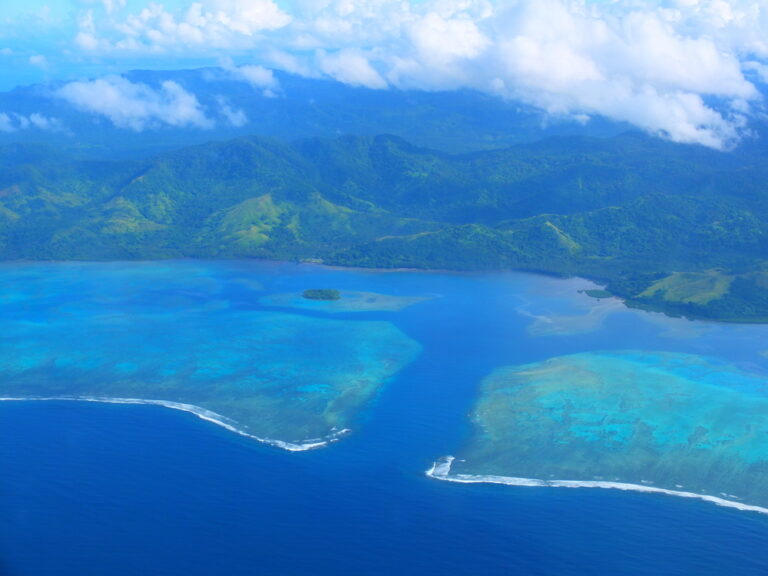
Bligh Waters. This is one of the most amazing dive spots in the entire world. This area located between the two main islands is what gives Fiji its reputation of being the soft coral capital of the world. Experiencing a (hopefully multiple) dive here is a must when heading over to Fiji for diving.
The current here flows from the depths, bringing nutrient-rich waters to the barrier and fringing reefs. This awesome dive spot is visited by all the liveaboards, so be prepared for a dive of a lifetime!
Bligh Water and the Koro Sea is a stunning spot to go to if you’re after an epic dive. Featuring an impressive array of different types of dive sites, from pinnacles rising up to 900 meters above the ocean floor to gorgeous, multi-colored soft coral reefs – this destination is the reason that Fiji is known as the soft coral capital of the world!
Named after a famous Captain, Bligh of The Bounty, the Bligh Waters is a stretch of sea separating Fiji’s 2 main islands of Vanua Levu and Viti Levu. While there are quite a few resorts scattered around this area, the Bligh Waters and the Koro Sea are predominately the domain of Fiji liveaboards.
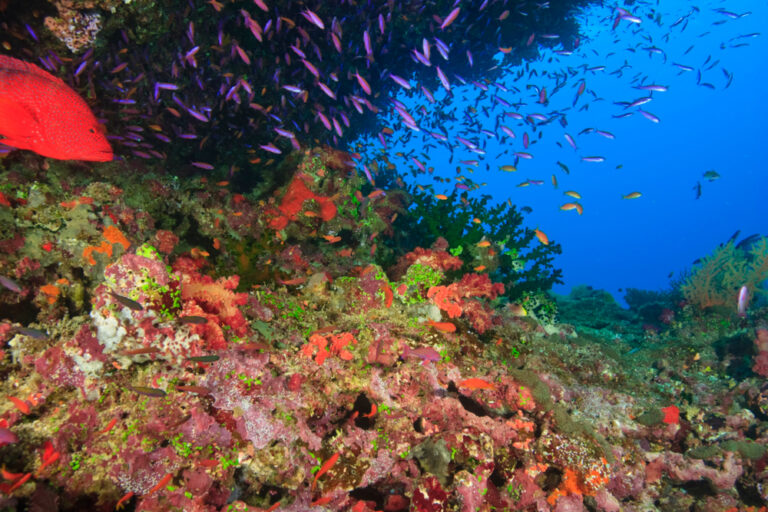
Dive sites in this destination:
- Nigali Pass
- Wakaya
- Gau
- Koro Islands
- Namenalala Islands
- Shark Fin Point
- E6
- Namena Marine Reserve
This destination is known by divers around the world for the great amount of water that moves through this channel. What exactly does that mean? Well, this means incredibly nutrient-rich waters, especially where the channel is narrow.
Thanks to the Fiji Aggressor’s AMAZING dive instructors, beginners will never be left behind when entering this dive destination – exploring the Namenalala Islands is always a hit with beginner divers and non-divers (snorkeling is great here), home to large manta rays, turtles, barracuda, clownfish, nudibranchs and the odd grey reef shark too.
Due to the currents, however, not all of the dive sites on offer in the Bligh Waters and the Koro Sea are suitable for beginners, which is why you’ll find the Fiji Nai’a likes this destination so much. The reefs make for a well-known playground for experienced divers, particularly photographers, seeking awesome conditions and uncrowded dive sites.
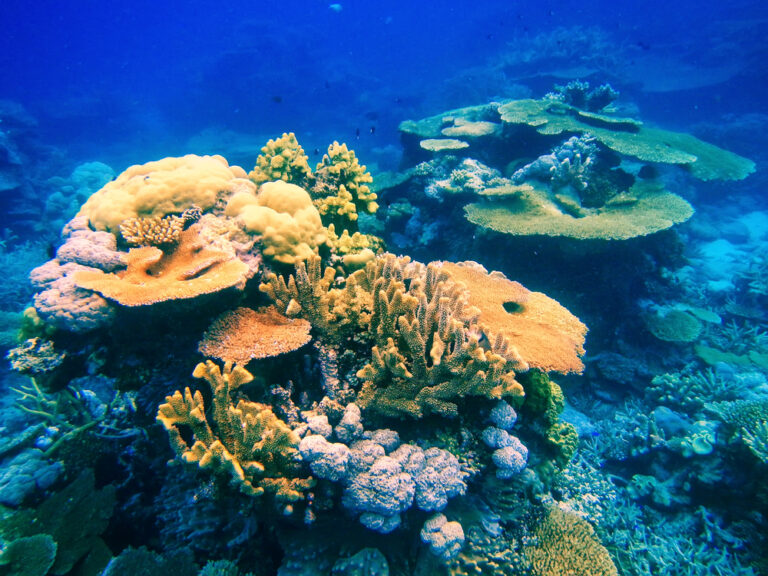
The diving possibilities for advanced divers are seriously exciting: wall dives, pinnacles, atolls, swim-throughs and drift dives. The dives sites vary from depths of around 5 meters to depths of well over 40 meters!
The surface conditions in the Bligh Water and Kora Sea dive sites can be somewhat rough from May – July when trade winds are at their strongest. However, the dive conditions remain great for these months.
There are lots of hard and soft colorful corals, as well as plenty of anemones with interesting reef inhabitants like brown banded pipefish and black saddle coral groupers.
Bligh Water and the Koro Sea boast a variety of large pelagics. Hammerheads, barracuda eagle rays and big fish can be seen in the current. Divers have reported encounters with white tips, silver-tips and grey reef sharks too!
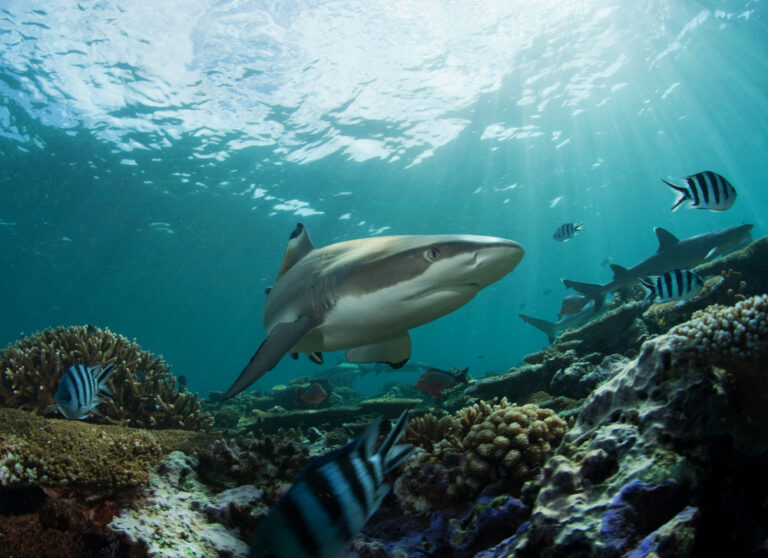
Diving in the Namena Marine Reserve means you will see an incredibly diverse group of marine species of all shapes and sizes in a completely protected marine area. The most impressive species include nudibranchs, seahorses, shrimps, and even the adorable pygmy seahorses, all of which inhabit this remote and colorful reserve.
Being probably the most popular diving destination, the Fiji Aggressor and the Nai’a liveaboards frequent these waters daily. The MV Reef Endeavour, however, does not enter into this destination and tends to stay closer to the Yasawa Islands.
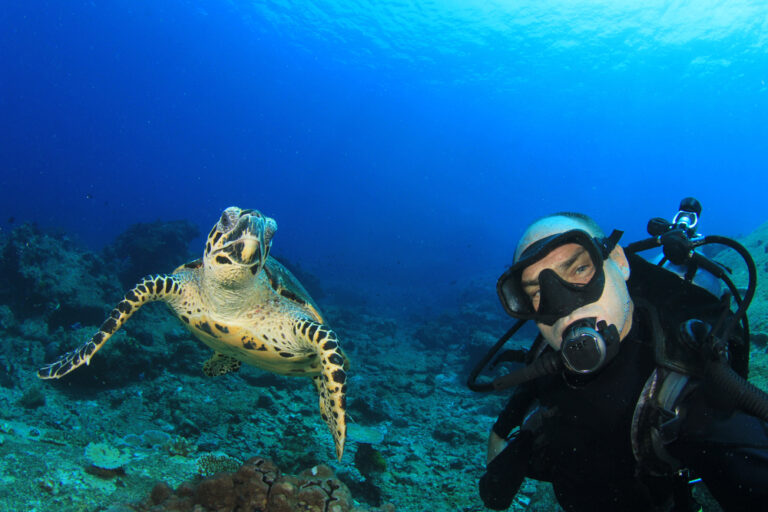
Dive into the Squads' Favourite Read
ATTENTION! Diving Squad Member – Do you love a great book? Yarp!? We already know you love diving…
Dive Atlas of the World, offers a beautifully photographed and professionally detailed tour of the worlds best dive sites, including both classics and new discoveries.
This stunningly presented book covers everything from Wrecks to Reefs, Muck Dives to Macro Photography, Blue Holes to Epic Walls and adrenaline soaked Drift Dives.
Get inspired, learn something brand new and prepare for your next diving adventure.
This is hands down the most informative, stunningly presented and all encompassing scuba diving book known to Diving Squad.
The Yasawas
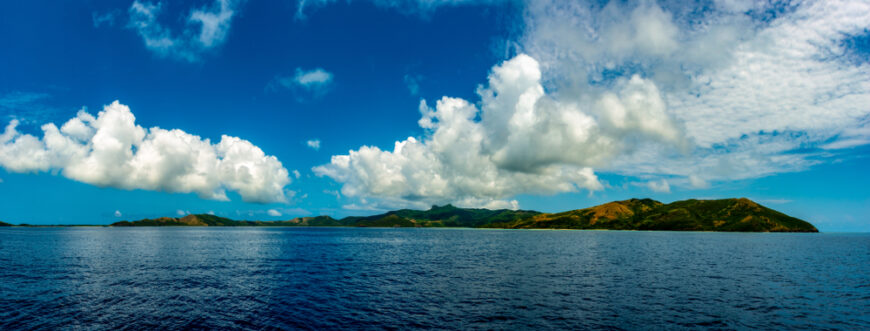
The Yasawa Islands are situated off the north west coast of the main island, Viti Levu, and being volcanic in origin, they offer some of the most dramatic scenery in the South Pacific!
Dive sites in this dive destination:
- TIVUA ISLAND
- BROTHERS ISLAND
- NAVITI ISLAND
- YASAWA ISLAND
- SAWA-I-LAU
- YAQETA
- DRAWAQA
- NUKU-I-MANA
- MONURIKI
- MONU BAY
- SACRED ISLANDS
- WAYA ISLANDS
The volcanic terrain around the Yasawas offers the dimension of a quite steep vertical underwater terrain, featuring amazing swim-throughs and canyons to explore. The islands are volcanic in origin and really dramatic looking, with peaks on the islands ranging from 250 to 600 meters in height.
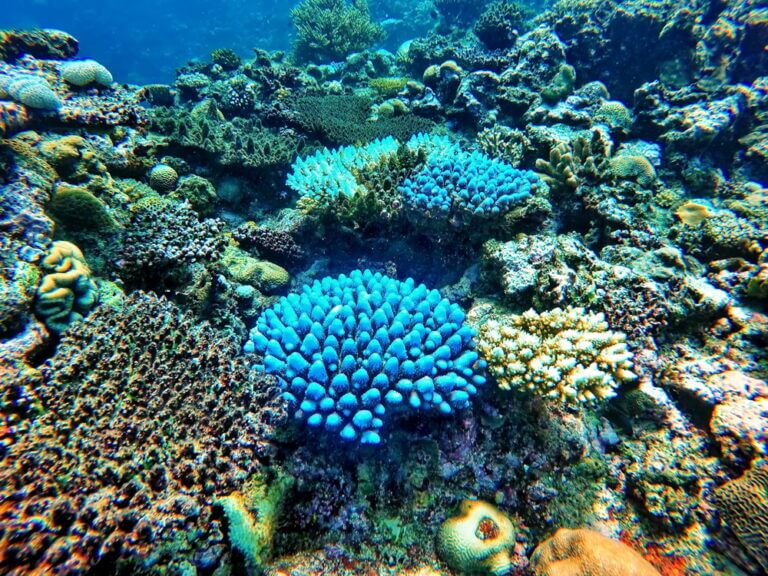
The fact that most of the islands in this destination have fringing reefs, allows for intensely colorful coral reef dives in shallow(ish) water and typically great snorkelling too!
The islands within this destination also have very low populations, meaning very little pollution and high visibility. Deep waters close to the shore make for a high chance of seeing pelagics too!
The Yasawa Islands and its variety of dive sites will allow you to experience some beautiful colors and corals – The soft corals, for which Fiji is famous, are not as spectacular here as they are in the regions further north (Koro Sea). Diving in the Yasawas does, however, offer an abundant marine life with turtles, reef sharks and eagle rays to enjoy.
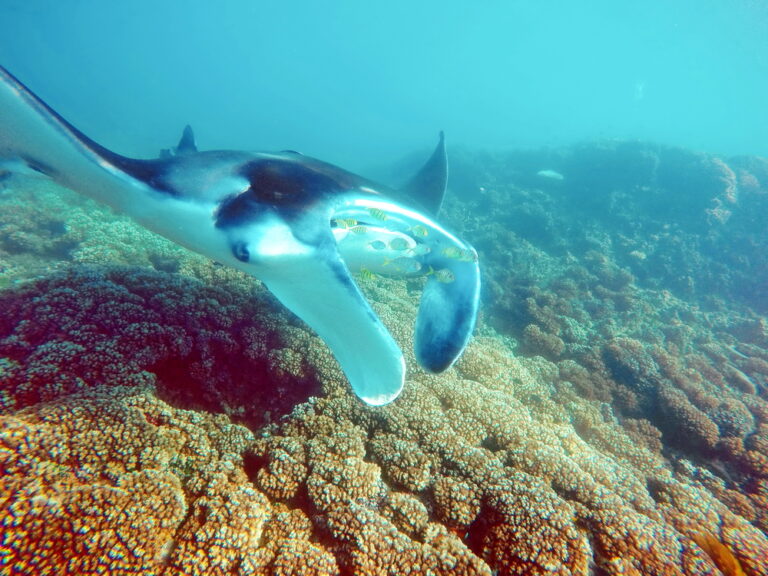
The Yasawas is the perfect diving spot for beginners who want to be mesmerized by the Fijian waters, and Tavewa is a good choice for novices, with huge cabbage corals, reef fish, and ghost pipefish.
For more experienced divers, the complex caves on offer in this destination require a lot of navigation before exiting and swimming along reef-capped walls, so you must be certified and competent in cave diving to enjoy this.
In the channel south of Naviti, divers and snorkelers can enjoy manta-ray encounters at the manta-cleaning stations. So if diving with mantas is something you’ve always wanted to do – look no further!
The Reef Endeavour liveaboard trips are all located within this destination, while the Fiji Nai’a and the Fiji Aggressor don’t explore this destination.
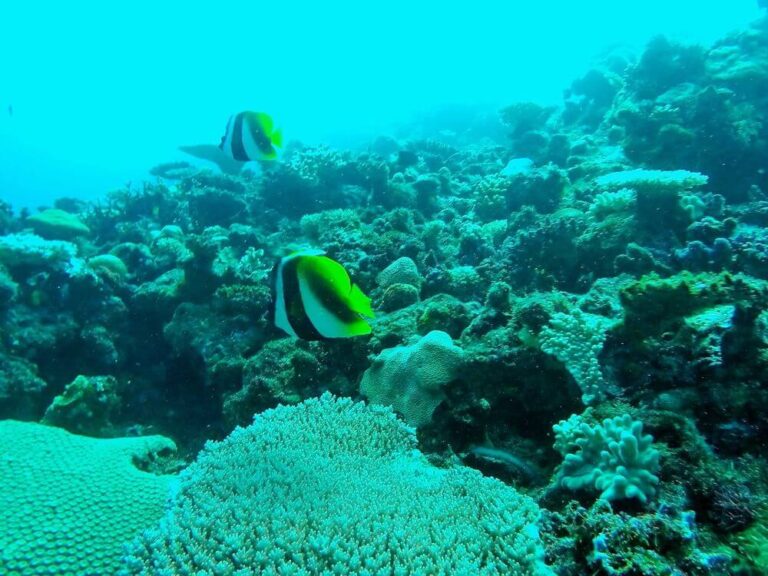
How to Give up Plastic - A Crucial Guide
Some 12.7 million tonnes of plastic enters the ocean every year, devastating the marine ecosystem by killing countless fish, seabirds, turtles, marine mammals and other creatures.
How to Give Up Plastic is the definitive guide to learning what you can do in your home, commune and workplace to start bringing about the end of our plastic dependent age.
It covers everything from easy wins such as using a reusable keep cup for your morning coffee, to lesser-known hacks like fixing a filter to your washing machine to catch some of the microfibres released from your clothes (microfibres are responsible for up to 30% of plastic in the ocean).
This is an essential overview of why we should all be working together no matter where we are in the world to reduce the amount of plastic being produce. Diving Squad is thoroughly committed to ending plastic pollution and marine conservation.
Kadavu Island
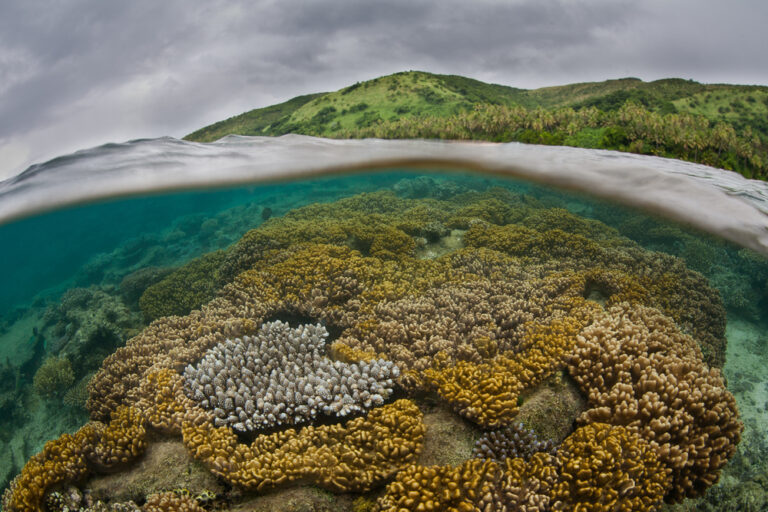
Kadavu is a tiny island that lies to the south of Viti Levu in Fiji. Part of a volcanic archipelago known as the Kadavu Group, Kadavu Island is the fourth largest island in Fiji and measures an impressive 411 square km. The Fiji Reef Endeavour is the only liveaboard that visits this remote and beautiful island.
Outdoor enthusiast will have fun on Kadavu Island, and three quarters of it is still covered in dense tropical rainforest. There are trails for hiking, mountain biking and beautiful waterfalls to visit. Birdwatching is also recommended as there are several indigenous species on the island.
The number one reason people love Kadavu Island is for its amazing snorkeling and scuba diving. The island sits on the Great Astrolabe Reef, one of the largest barrier reefs in the world, measuring a staggering 100 km in length! Part of the Kadavu Group, the nearby Ono Island also sits on this barrier reef.
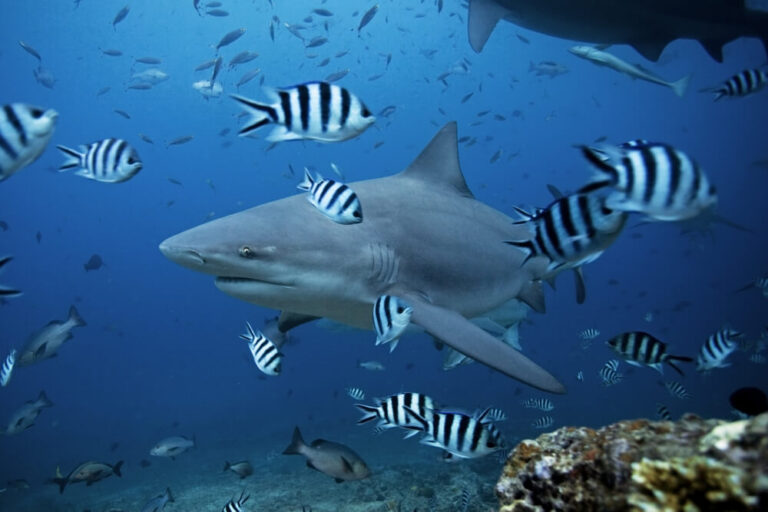
The reef (named after a French ship), is a breeding ground for big fish like tuna, marlin and various sharks, like reef sharks. Gaps in the reef, like Naiqoro Passage, see big fish action along the colorful soft coral coated walls and are also subject to currents.
Diving the Great Astrolabe Reef gives you a once in a lifetime opportunity to enjoy the healthy coverage of hard and soft coral. Sponges, sea whips, sea fans and giant clams crammed on to coral bommies make for a wonderful sight too!
Amongst the pinnacles, passages and along walls, you are very likely to swim into a few friendly green sea turtles and also some nosy potato cod. Experienced divers? Here’s a mission for you: At a dive site called Seafan Alley, there have been sightings of hammerhead sharks but usually at depths below 30 m.
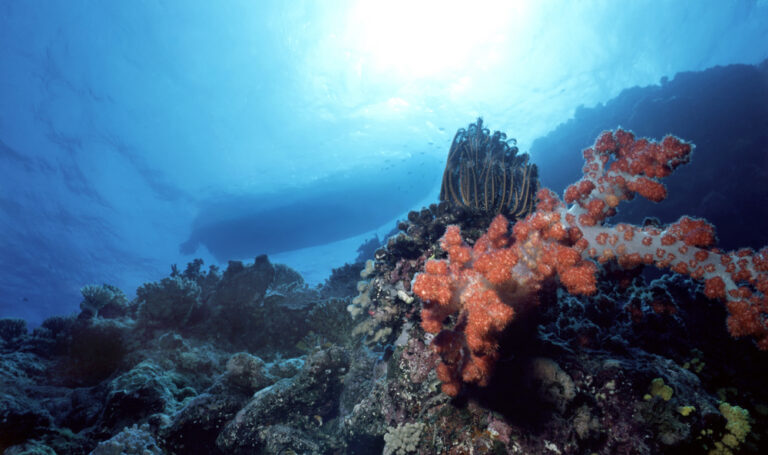
Mamanuca
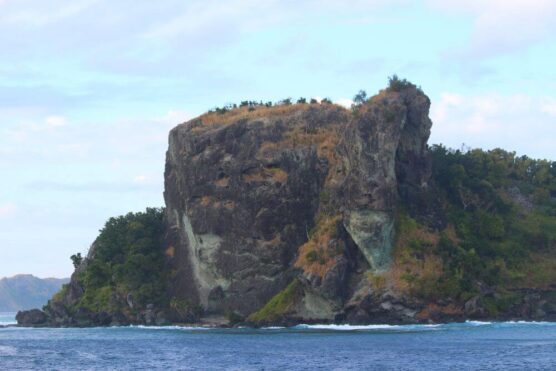
The famous Mamanuca islands lie off the west coast of Viti Levu and is made up of some 20 islands. These idyllic islands offer palm-fringed white sandy beaches and snorkelling right from the shore.
Divers aboard the Reef Endeavour – the only liveaboard that sails to these parts – enjoy a magnitude of activities on their trips. The watersport opportunities around this destination are endless, and really suited to travelers. From parasailing, dolphin watching, and surfing to exploring the various islands!
Diving in the Mamanucas is generally on beautiful coral reefs and perfectly suited to those who would like to do some casual diving while on holiday, as it’s the perfect beginners dive location.
For those travelling with non-divers or children, there are some fantastic snorkelling and diving sites to enjoy. The diving here is mellow, fun and super easy with some fantastic reefs, walls, swim-throughs and even some wrecks!
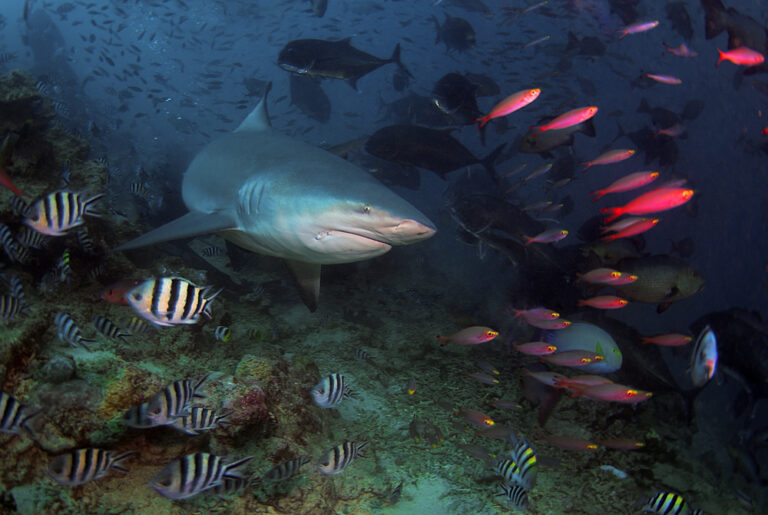
We know, we know… can’t mention wrecks and not give a little taster now can we? Salamanda shipwreck is something this destination boasts.
This fantastic 40 metre long ship located beneath around 30 metres of water sees out its days as a great artificial reef. Covered from head to toe in soft corals and anemones, this fun wreck dive is perfect for the more experienced divers.
Located just off Malolo Island, you’ll be able to experience The Supermarket. This spot is an absolute hub for the shark lovers. In fact, this spot was once Fiji’s best shark dive until Beqa Lagoon took its place.
Diving in this destination will have you spotting some black tip, white tip and grey reef sharks patrolling the oceans waters.
Castaway Passage is a gap in the outer Barrier Reef that has huge water surges entering into the lagoon. This means fantastic visibility and even better marine life, so expect to see some manta rays, more sharks, marlin and a number of other pelagic species to keep you on your fins!
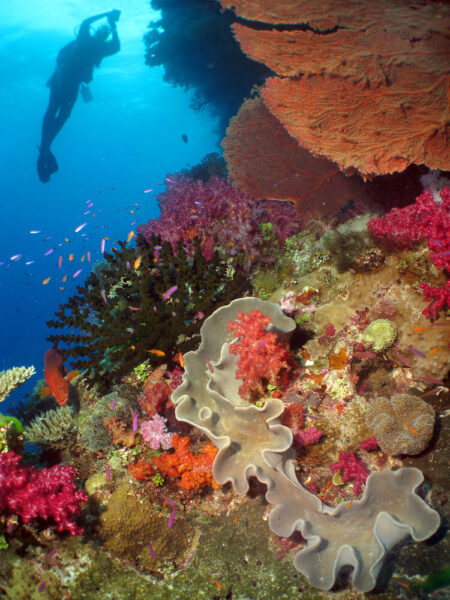
Diving Squad Debriefing
Congratulations! You’ve FINALLY reached the end of this mammoth article, and you know what that means – One step closer to diving into the Fiji waters!
Now you are seriously well-informed on all the liveaboards in Fiji, and you will definitely be able to pick your perfect match.
This article has covered everything around Fiji liveaboard diving, from water temperature in Fiji, and scubadiving in Fiji to everything you need to know about diving in the Namena Marine Reserve… and so much more!
For divers on a budget, and those looking for shorter dive trips, to divers with loads of experience and looking for longer trips – We gotcha!
Now that you are ready for Fiji liveaboards… Don’t wait for everything to book up and you have to wait an entire year to secure a Fiji liveaboard (and not to mention have to re-read this book of an article). Book NOW! These liveaboards seriously sell out fast!!
Alright Diving Squad, did we somehow not cover something? Need more details on something before booking? We’ll strive to answer most of your questions below!
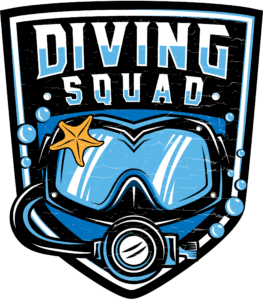
You May Also Like:
Help Diving Squad with Marine Conservation
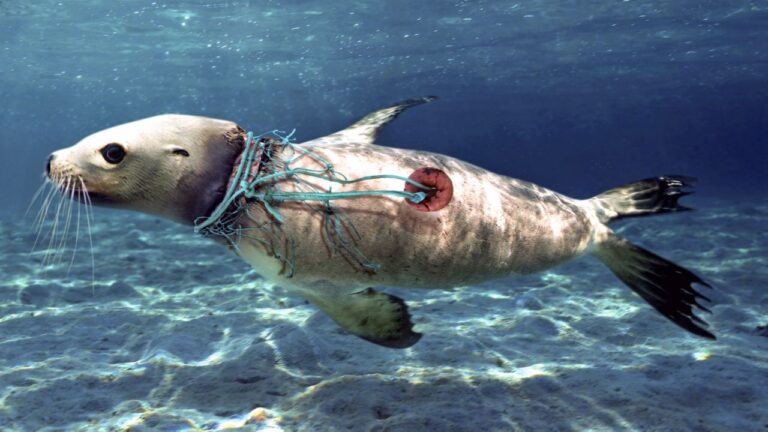
EPIC FAIL HUMANITY:
- Over 18 billion pounds of plastic enters the World’s Oceans every year. That’s enough trash to cover every foot of coastline around the world with five full trash bags of plastic (Every. Year).
- As well as containing it’s own toxic chemicals, like BPA, plastic absorbs even more potent toxins from other pollutants in the Ocean such as oil, untreated sewage and radioactive waste.
- Plastic is indestructible and never degrades. Instead it simply breaks down into smaller pieces which accumulate together, en masse.
- Today, each square mile of ocean has over 45,000 pieces of plastic floating in it.
- Plastic is mistaken for food and eaten by marine animals. Because it can’t be digested, it fills their stomachs and causes them to starve to death.
- For those “lucky” individuals that don’t eat plastic, the toxic chemicals present in every part of sea water from plastic, wreck havoc throughout the ecosystem causing changes in animals behaviour, immune systems and reproduction.
- There are 200 known ‘dead zones’, or areas deprived of oxygen and devoid of life, (area between 1 and 70,000 km²), in the world ocean, due to plastic: this number has doubled every decade since 1960.
- Chemicals in heavily polluted waters can make their way back to us and cause serious health issues like reproductive problems, hormonal problems, kidney damage, and nervous system damage.
- It’s estimated that by the year 2050, there will be more plastic in the ocean than fish (by weight). AND IT’S GETTING WORSE
The Time to Act is NOW
To Diving Squad, the grizzly stats above are appalling, tragic and completely UNACCEPTABLE. That’s why we are working hard towards combating plastic pollution in the ocean.
How do we do this? Through spreading awareness, providing informative guides on eco friendly diving and donating 10% of all profits that we make towards combating plastic pollution in the Ocean.
So, how does Diving Squad make money? Through You! Every time you click on one of our painstakingly, yet lovingly researched liveaboard, gear or insurance links and spend money – we earn a % commission thanks to affiliate partnerships.
We then donate 10% of this towards Marine Conservation Schemes that target plastic pollution.
What does this mean? It means that if you book a Liveaboard through a Diving Squad link – some of that money goes directly towards Marine Conservation. Buy a piece of Gear through a Diving Squad link?
Nice! You’ve just contributed money towards Marine Conservation. Booked yourself Diving Insurance through Diving Squad? Go, go Marine Conservation!
So help us…help you…help the Ocean. Together, we can do this.
To which Marine Conservation charity do we donate, you might ask? Our squad is already hard at work selecting the ideal candidate. The winner will be announced at the end of 2019. Have a suggestion? We’d love to hear… If we pick your suggestion, there just might be something in it for you…
Contact us at: Alex Hatton: ajhatton55@gmail.com (Grand Admiral at Diving Squad).

